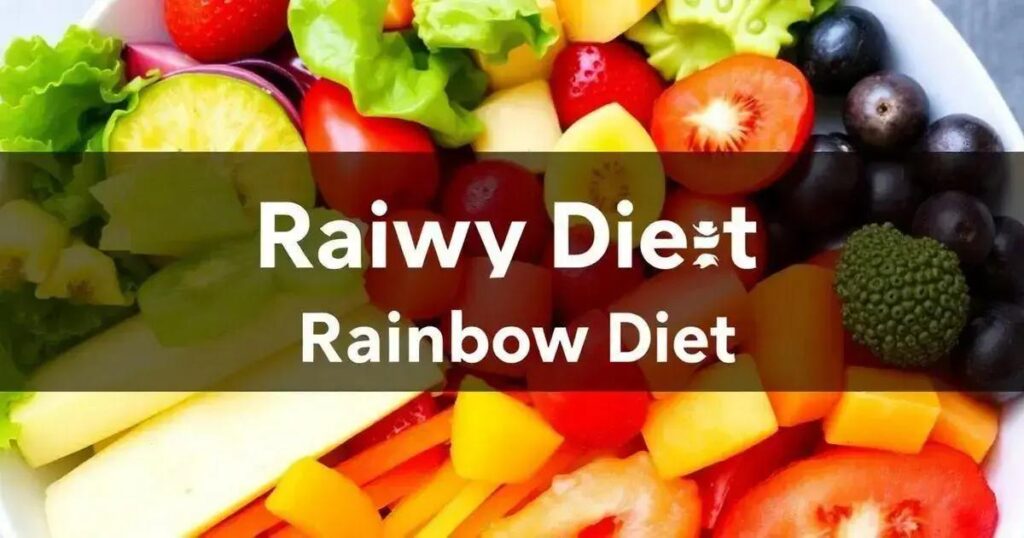Eating a rainbow diet involves incorporating a variety of colorful fruits and vegetables into your daily meals, providing essential nutrients that enhance overall health, immunity, and wellness. This approach not only makes meals visually appealing but also helps reduce the risk of chronic diseases.
Eating a rainbow diet is a great way to boost your nutritional intake. By consuming fruits and vegetables of different colors, you can significantly enhance your health and wellness. Each color represents specific nutrients and health benefits that are vital for your body. In this article, we will delve into the meaning of the rainbow diet, explore its numerous health benefits, and offer practical tips on how to easily incorporate colorful foods into your daily meals.
Understanding the Rainbow Diet
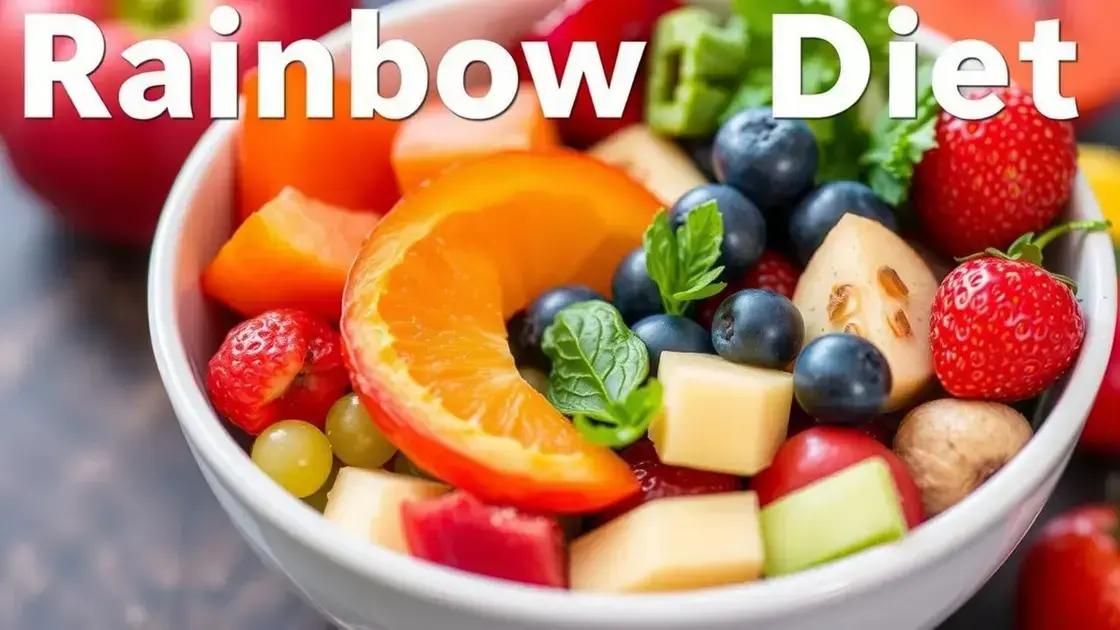
The rainbow diet is a way of eating that encourages you to consume a variety of colorful fruits and vegetables. Each color in the rainbow represents different nutrients that are beneficial for your body. By diversifying your diet, you can improve your overall health and well-being.
What is the Rainbow Diet?
The rainbow diet consists of foods in a variety of colors. Red foods like tomatoes and strawberries are rich in antioxidants. Orange foods such as carrots and sweet potatoes are high in beta-carotene. Yellow foods like bananas and corn provide essential vitamins. Green vegetables such as spinach and broccoli are packed with vitamins and minerals. Blue and purple foods like blueberries and eggplants contain important phytonutrients. Finally, white foods like garlic and onions offer health benefits too.
Importance of Color Variety
Each color offers unique health benefits. For example, red foods boost heart health, orange and yellow foods support vision, green foods assist with digestion, while blue and purple foods can help reduce inflammation. Consuming a variety of these foods ensures that you get a wide range of nutrients necessary for your health.
How to Start a Rainbow Diet
To begin your rainbow diet, aim to fill your plate with various colors at every meal. Think about adding different colored fruits and vegetables to your breakfast, lunch, and dinner. Make smoothies with multiple colors or create a colorful salada for lunch. By integrating colorful foods into your daily routine, you’ll make meals more appealing and nutritious.
Remember, the key to the rainbow diet is diversity. The more colors you eat, the more nutrients you consume, leading to maximum health benefits.
Health Benefits of Colorful Foods
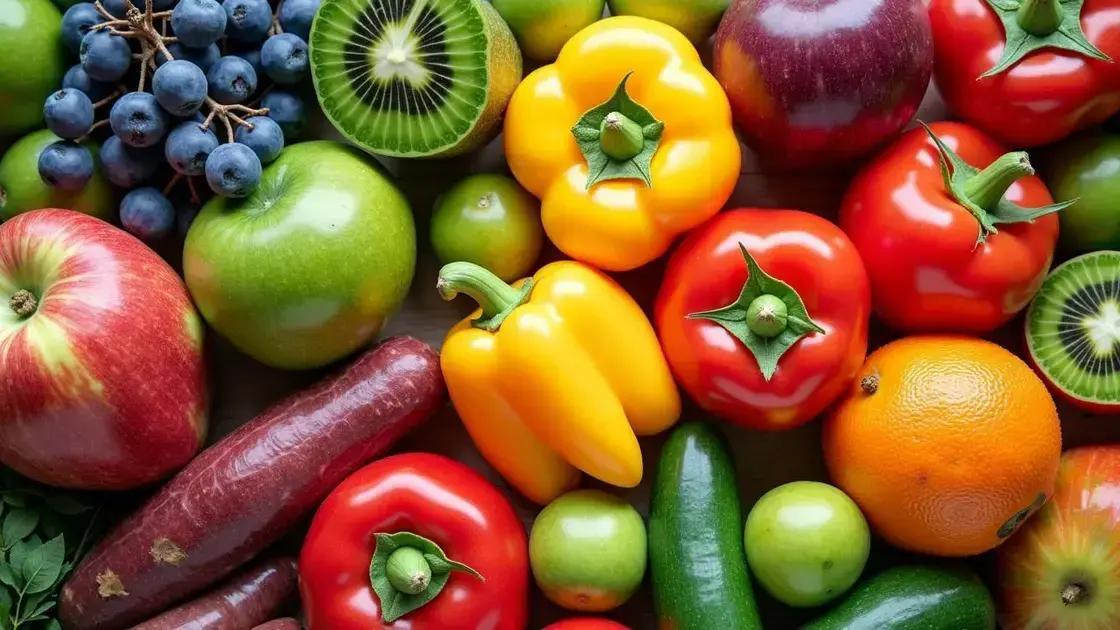
Colorful foods not only make our plates visually appealing but also come with numerous health benefits. Each color group contains unique nutrients that play different roles in maintaining our health.
Red Foods
Red fruits and vegetables such as tomatoes, red peppers, and strawberries are rich in lycopene and anthocyanins, which can help protect your heart and reduce the risk of certain cancers.
Orange and Yellow Foods
Foods like carrots, oranges, and sweet potatoes are high in beta-carotene and Vitamin C. These nutrients are essential for good vision, a healthy immune system, and improved skin health.
Green Foods
Green vegetables such as kale, spinach, and broccoli are loaded with vitamins A, C, and K, along with minerals like calcium and iron. They are great for bone health, digestion, and reducing inflammation.
Blue and Purple Foods
Blueberries, blackberries, and eggplants are rich in anthocyanins which can enhance brain health, improve memory, and reduce the risk of heart disease.
White Foods
White foods such as garlic, onions, and cauliflower contain important nutrients like allicin, which has been linked to reducing blood pressure and improving cholesterol levels.
Incorporating a variety of colorful foods into your diet can lead to a more balanced intake of essential nutrients, ultimately supporting overall health and well-being.
How to Incorporate Rainbow Foods Daily
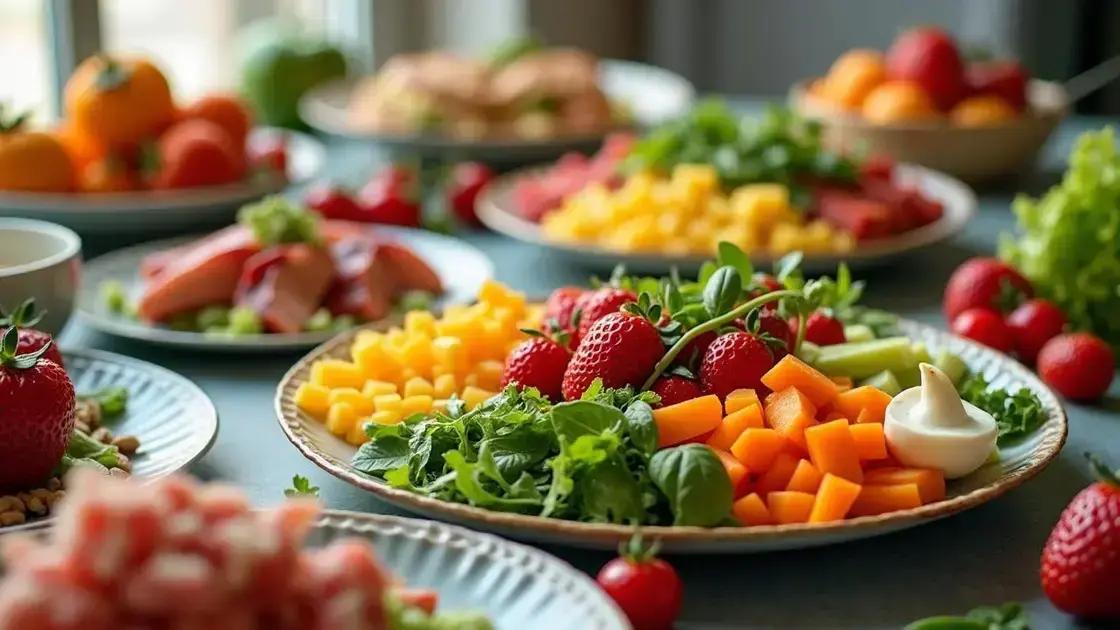
Incorporating rainbow foods into your daily diet is easier than you might think. Here are some simple tips to help you eat a variety of colorful fruits and vegetables every day.
Start with Breakfast
Begin your day with a colorful breakfast. Add berries, like blueberries or strawberries, to your cereal or yogurt. You can also make a smoothie with greens, like spinach or kale, along with fruits for added nutrition.
Pack a Rainbow Lunch
For lunch, prepare a salad filled with mixed greens, bell peppers, cherry tomatoes, and purple cabbage. This not only looks appealing but also provides you with various essential nutrients. Wrap your sandwich in a whole-wheat tortilla with slices of colorful vegetables like carrots and cucumbers.
Colorful Snacks
When you’re hungry between meals, choose snacks that are vibrant in color. Munch on baby carrots, red bell pepper strips, or a mix of dried fruits. Make fruit skewers using grapes, melons, and pineapples for a fun, nutritious treat.
Dinner with Variety
At dinner, aim for a rainbow on your plate. Consider roasting an array of vegetables, such as sweet potatoes, broccoli, and beets, bringing out their natural flavors. Add a protein source, like grilled chicken or tofu, and serve with a side of quinoa to complete your colorful meal.
By planning your meals and incorporating different colors, you’ll enjoy a healthier diet and potentially learn to love a variety of foods you may not have tried before.
Recipes for a Rainbow Plate
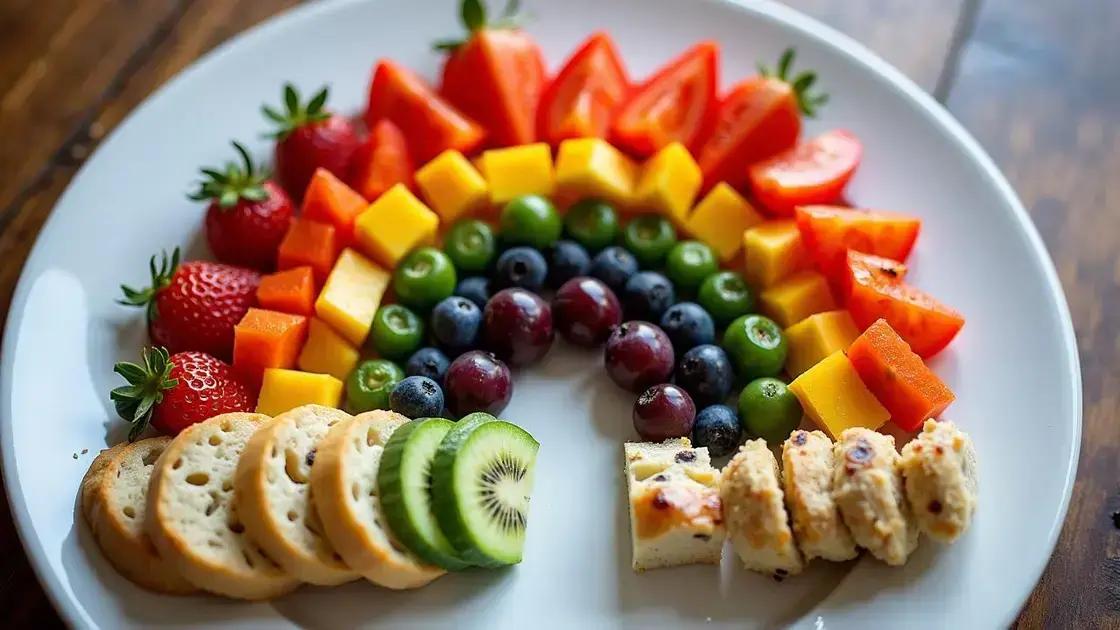
Creating a rainbow plate is both fun and nutritious. Here are some tasty recipes that showcase the beauty and benefits of colorful foods.
Rainbow Veggie Stir-Fry
For a vibrant stir-fry, gather a mix of colorful vegetables: red bell peppers, orange carrots, yellow squash, green broccoli, and purple eggplant. Sauté these veggies in olive oil with garlic and ginger. Serve over brown rice or quinoa for a complete meal.
Fruit Rainbow Salad
Make a refreshing fruit salad that pops with color. Combine red strawberries, orange cantaloupe, yellow pineapple, green kiwi, blue blueberries, and purple grapes. Drizzle with a little honey and lime juice for extra flavor.
Colorful Quinoa Bowl
Create a nutritious quinoa bowl by mixing cooked quinoa with cherry tomatoes, shredded carrots, diced cucumber, and spinach. Top it with avocado slices and a sprinkle of feta cheese or chickpeas for added protein.
Vegetable Rainbow Wrap
Wrap up a variety of colorful ingredients in a whole wheat tortilla. Use layers of red lettuce, orange hummus, yellow bell peppers, green cucumbers, and purple cabbage. Roll tightly and enjoy as a healthy lunch option.
These recipes not only look appealing but also provide a wide range of nutrients essential for your health. Experiment with different ingredients to create your own rainbow plates!
Embrace the Rainbow Diet for Better Health
Eating a rainbow diet offers a colorful way to enhance your nutrition and overall health. By including a variety of fruits and vegetables in your meals, you gain a wealth of vitamins, minerals, and antioxidants that promote well-being.
From understanding the rainbow diet to exploring the health benefits of colorful foods and learning how to incorporate them daily, embracing this approach can transform your eating habits.
With enticing recipes and simple meal ideas, creating a rainbow plate is both enjoyable and beneficial. So, start adding more colors to your meals and experience the maximum nutritional benefits of a rainbow diet today!
FAQ – Frequently Asked Questions about the Rainbow Diet
What is a rainbow diet?
A rainbow diet involves eating a variety of colorful fruits and vegetables that provide different nutrients essential for health.
Why is it important to eat colorful foods?
Colorful foods are rich in vitamins, minerals, and antioxidants that support overall health, boost immunity, and reduce the risk of chronic diseases.
How can I incorporate more colorful foods into my meals?
You can add colorful fruits and vegetables to your breakfast, pack rainbow salads for lunch, and include a variety of colors in your dinner dishes.
Are there specific health benefits for each color of food?
Yes, different colors represent different nutrients. For example, red foods improve heart health, while green foods aid in digestion.
Can you provide some easy recipes for a rainbow plate?
Absolutely! Try a rainbow veggie stir-fry, a fruit rainbow salad, a colorful quinoa bowl, or a vegetable rainbow wrap for delicious, nutritious meals.
How can I make eating a rainbow diet fun for children?
Involving children in meal prep, making colorful snacks like fruit skewers, and presenting foods in fun shapes can make eating healthy more enjoyable for them.

